Wingspan 11 m First flight 2000 | Length 15 m Engine type Pratt & Whitney F119 | |
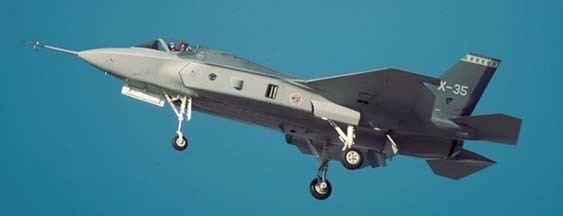 | ||
Manufacturers BAE Systems, Lockheed Martin Aeronautics, Northrop Grumman | ||
Lockheed martin x 35
The Lockheed Martin X-35 was a concept demonstrator aircraft (CDA) developed by Lockheed Martin for the Joint Strike Fighter program. The X-35 was declared winner over the competing Boeing X-32 and a developed, armed version went on to enter production in the early 21st century as the F-35 Lightning II.
Contents
- Lockheed martin x 35
- Lockheed martin x 35 joint strike fighter
- Development
- Design
- Evaluation
- Aircraft on display
- Specifications X 35
- References
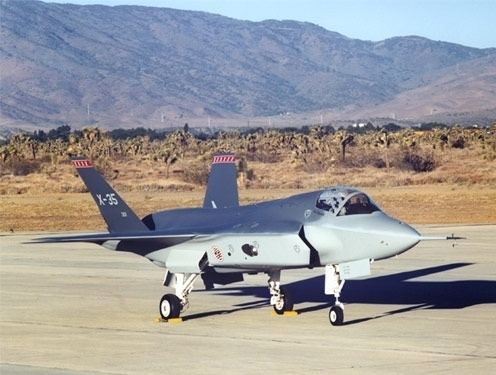
Lockheed martin x 35 joint strike fighter
Development
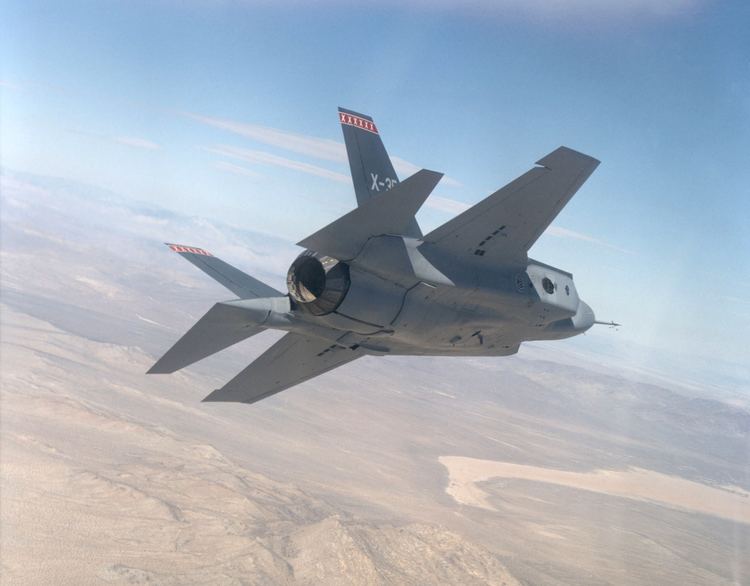
The Joint Strike Fighter evolved out of several requirements for a common fighter to replace existing types. The actual JSF development contract was signed on 16 November 1996. The JSF program was created to replace various aircraft while keeping development, production, and operating costs down. This was pursued by building three variants of one aircraft, sharing 80% of their parts.
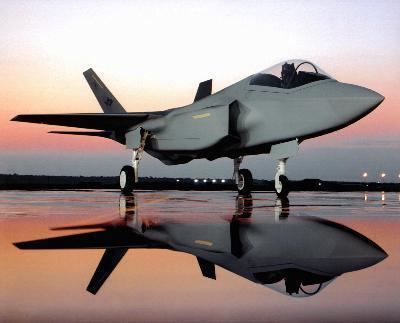
The first is the F-35A, a conventional takeoff and landing (CTOL) variant. It is the smallest and lightest version, and is intended primarily to replace the U.S. Air Force's aging F-16 Fighting Falcons and A-10 Thunderbolt IIs. This is the only version with an internal gun, the GAU-22. This 25 mm cannon is an upgrade from the 20 mm M61 Vulcan carried by USAF fighters since the F-104 Starfighter. Deliveries were scheduled to begin in 2011. The F-35B is the short-takeoff and vertical-landing (STOVL) variant due to replace the U.S. Marine Corps AV-8 Harrier IIs and F/A-18 Hornets, and Royal Air Force/Royal Navy Harrier GR7/GR9s beginning in 2012. The Royal Navy will use this to replace its Harrier GR7s and the RAF replace its Harrier GR9s. The U.S. Marine Corps will use the F-35B to replace both its AV-8B Harrier IIs and F/A-18 Hornets with a design similar in size to the Air Force F-35A, trading fuel volume for vertical flight systems. Like the Harrier, guns will be carried in a pod. Vertical flight is by far the riskiest, and in the end, a decisive factor in design. Lastly, the F-35C, a carrier-based variant, will replace the "legacy" F/A-18 Hornets and serve as a stealthy complement to the F/A-18E/F Super Hornet. It will have a larger, folding wing and larger control surfaces for improved low-speed control, and stronger landing gear for the stresses of carrier landings. The larger wing area provides increased range and payload, achieving much the same goal as the much heavier Super Hornet. The U.S. Navy plans to purchase 480 JSF, with deliveries scheduled to start in 2012.
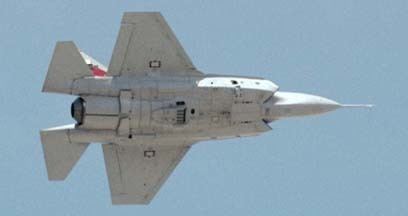
The primary customers and financial backers are the United States and the United Kingdom. Eight other nations are also funding the aircraft's development. Total program development costs, less procurement, are estimated at over US$40 billion, of which the bulk has been underwritten by the United States. Production costs are estimated at US$102 million per unit for 2,400 units.
There are three levels of international participation. The United Kingdom is the sole 'Level 1' partner, contributing slightly over US$2 billion, about 10% of the development costs. Level 2 partners are Italy, which is contributing US$1 billion, and the Netherlands, US$800 million. At Level 3 are Canada, US$440 million; Turkey, US$175 million; Australia, US$144 million; Norway, US$122 million; and Denmark, US$110 million. The levels generally reflect the financial stake in the program, the amount of technology transfer and subcontracts open for bid by national companies, and the priority order in which countries can obtain production aircraft. Israel and Singapore have also joined as Security Cooperative Participants.
Design
Elements of the X-35 design were pioneered by the F-22 Raptor. In June 1994, Lockheed revealed that it had entered into a collaborative relationship with Yakovlev on their bid for the Joint Advanced Strike Technology competition, consisting of the purchase of design data from the Russian company; according to Jane's All the World's Aircraft 2000–2001 this was data from the cancelled Yak-141 program which employed a similar propulsion system. Although helmet-mounted display systems have already been integrated into some fourth-generation fighters such as the JAS 39 Gripen, the F-35 will be the first modern combat aircraft in which helmet-mounted displays will replace a head-up display altogether.
During concept definition, two Lockheed airframes were flight-tested: the Lockheed X-35A (which was later converted into the X-35B), and the larger-winged X-35C. Both the Boeing X-32 and X-35 power plants were derived from Pratt & Whitney's F119, with the STOVL variant of the latter incorporating a Rolls-Royce Lift Fan module.
Instead of lift engines or using a direct lift engine like the Rolls-Royce Pegasus in the Harrier Jump Jet, the X-35B was powered by the F119-PW-611 which used an innovative shaft-driven lift fan, patented by Lockheed Martin employee Paul Bevilaqua, and developed by Rolls-Royce. In normal wing-borne flight, the F119-PW-611 was configured as a normal reheated turbofan. Somewhat like a turboprop embedded into the fuselage, engine shaft power was diverted forward via a clutch-and-bevel gearbox to a vertically mounted, contra-rotating lift fan located forward of the main engine in the center of the aircraft. Bypass air from the cruise engine turbofan exhausted through a pair of roll-post nozzles in the wings on either side of the fuselage, while the thrust from the lift fan balanced the thrust of the core stream exhausting through vectored cruise nozzle at the tail. The X-35B powerplant effectively acted as a flow multiplier, much as a turbofan achieves efficiencies by moving unburned air at a lower velocity, and getting the same effect as the Harrier's huge, but supersonically impractical main fan. Like lift engines, this added machinery was dead weight during flight, but the increased lift thrust enhanced take-off payload by even more. The cool fan also reduced the harmful effects of hot, high-velocity air which could harm runway pavement or an aircraft carrier deck. Though risky and complicated, it was made to work to the satisfaction of DoD officials..
Evaluation
On 20 July 2001, to demonstrate the X-35's unique capability (compared to the X-32), the X-35B STOVL aircraft took off in less than 500 feet (150 m), went supersonic, and landed vertically.
In the fly-off between the Lockheed Martin X-35 and the Boeing X-32, the former was judged to be the winner. As a result, a contract for System Development and Demonstration (SDD) of the F-35 was awarded on 26 October 2001 to Lockheed Martin, whose X-35 beat the Boeing X-32.
There are a number of differences between the X-35 and F-35.
Aircraft on display
The X-35A was converted into the X-35B for the STOVL part of the competition. It now resides at the National Air and Space Museum Steven F. Udvar-Hazy Center, near Washington Dulles International Airport in Virginia.
Following the end of the competition, the X-35C was transferred to the Patuxent River Naval Air Museum in St Mary's county, Maryland, where it reposes near the X-32B STOVL concept demonstrator aircraft.
Specifications (X-35)
Some information is estimated.
Data from Lockheed Martin X-35 Fighter Demonstrator
General characteristics
Performance
